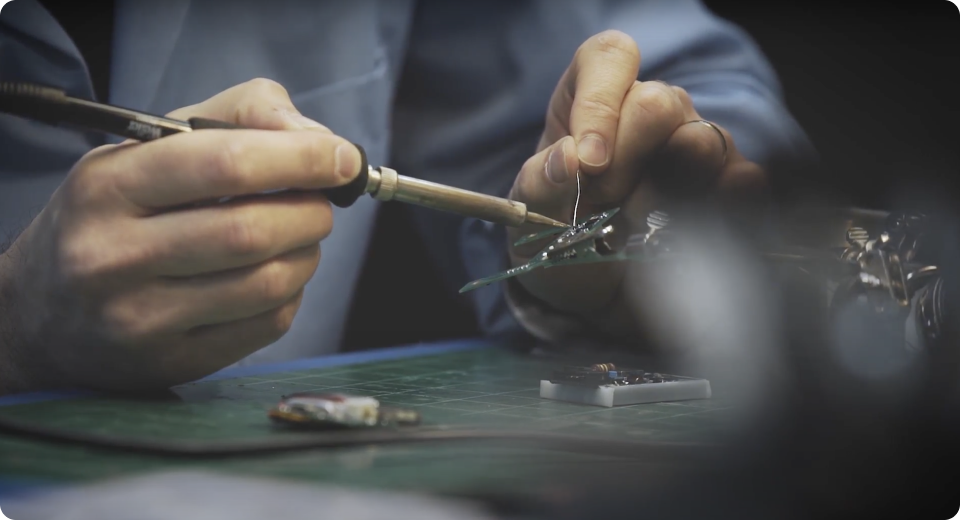The integration of textiles and electromechanical components facilitates the manifestation of functional Textile Computing ™ solutions.
Enabling textiles to perform a range of functions and processes, components typically include a combination of sensors, microprocessors, and other electronics that are embedded into the textile fabric.
Hardware Development

Mechanical Engineering
Full spectrum mechanical design—from concept to prototype, testing to tooling, and design for assembly of prototypes and products – efficiently carried out in accordance with defined specifications and regulatory requirements.
Housing & Connectors
Designed and fabricated to enable power delivery and introduction of data computing components. Encapsulations and couplings can be integrated permanently or inserted temporarily, needing to be unobtrusive, reliable, and durable, following design principles and standards to ensure functionality.
Integration Techniques
Full spectrum mechanical design—from concept to prototype, testing to tooling, and design for assembly of prototypes and products – efficiently carried out in accordance with defined specifications and regulatory requirements.
Electrical Engineering
Development of novel sensory and actuation electrical components from early concept phase all the way to market production. Specialized designs for Textile Computing™ systems and compatible with textile sensors and electrodes.
Custom circuit boards and electronics designed against desired specifications and requirements, with miniaturization of electronics to fit housings and connectors. Electrical compliance based on the required standards of the field of use, verified through internal/external testing and validation.

Bioinstrumentation
Creation of electronics for acquisition of multi-modal biometric data, through textile based sensors, or integrated electronics within the textile medium. Examples include electrophysiological signal acquisition through textile electrodes, or photoplethysmography via integrated electronics.
Embedded Systems
Firmware, or the embedded software component of the device’s electronics, modulates the electronic components and runs algorithms to provide more flexibility for the desired application. Electronic functions, including data collection, processing, and transfer, can all be programmed. This can allow for seamless integration between Textile Computing™ systems and interoperability with external components or systems.
When designing these embedded softwares, we take into account important factors, such as firmware stability, secure and reliable connectivity, and enhanced battery life.
We unlock the potential of multi-modality data through the use of digital signal processing, which is further enhanced & automated through the application of machine learning techniques. By designing algorithms that are tailored to analyze and arrange relevant metrics, we realize the potential of the Textile Computing ™ systems.
These data processing models can be deployed at the electronics level (edge), at a software interface (phone, tablet, or computer), or at the cloud level. The multi-modality data can be viewed as either quantitative inputs from the electronics or as qualitative inputs from users. Ensuring interoperability among various data modalities and the meaningful interpretation of these data modalities for making determinations in different application contexts, such as real-time diagnostics or future predictions, rounds out the Textile Computing ™ system offering.
Signal Processing & Machine Learning
We unlock the potential of multi-modality data through the use of digital signal processing, which is further enhanced & automated through the application of machine learning techniques. By designing algorithms that are tailored to analyze and arrange relevant metrics, we realize the potential of the Textile Computing ™ systems.
These data processing models can be deployed at the electronics level (edge), at a software interface (phone, tablet, or computer), or at the cloud level. The multi-modality data can be viewed as either quantitative inputs from the electronics or as qualitative inputs from users. Ensuring interoperability among various data modalities and the meaningful interpretation of these data modalities for making determinations in different application contexts, such as real-time diagnostics or future predictions, rounds out the Textile Computing ™ system offering.
When designing these embedded softwares, we take into account important factors, such as firmware stability, secure and reliable connectivity, and enhanced battery life.
